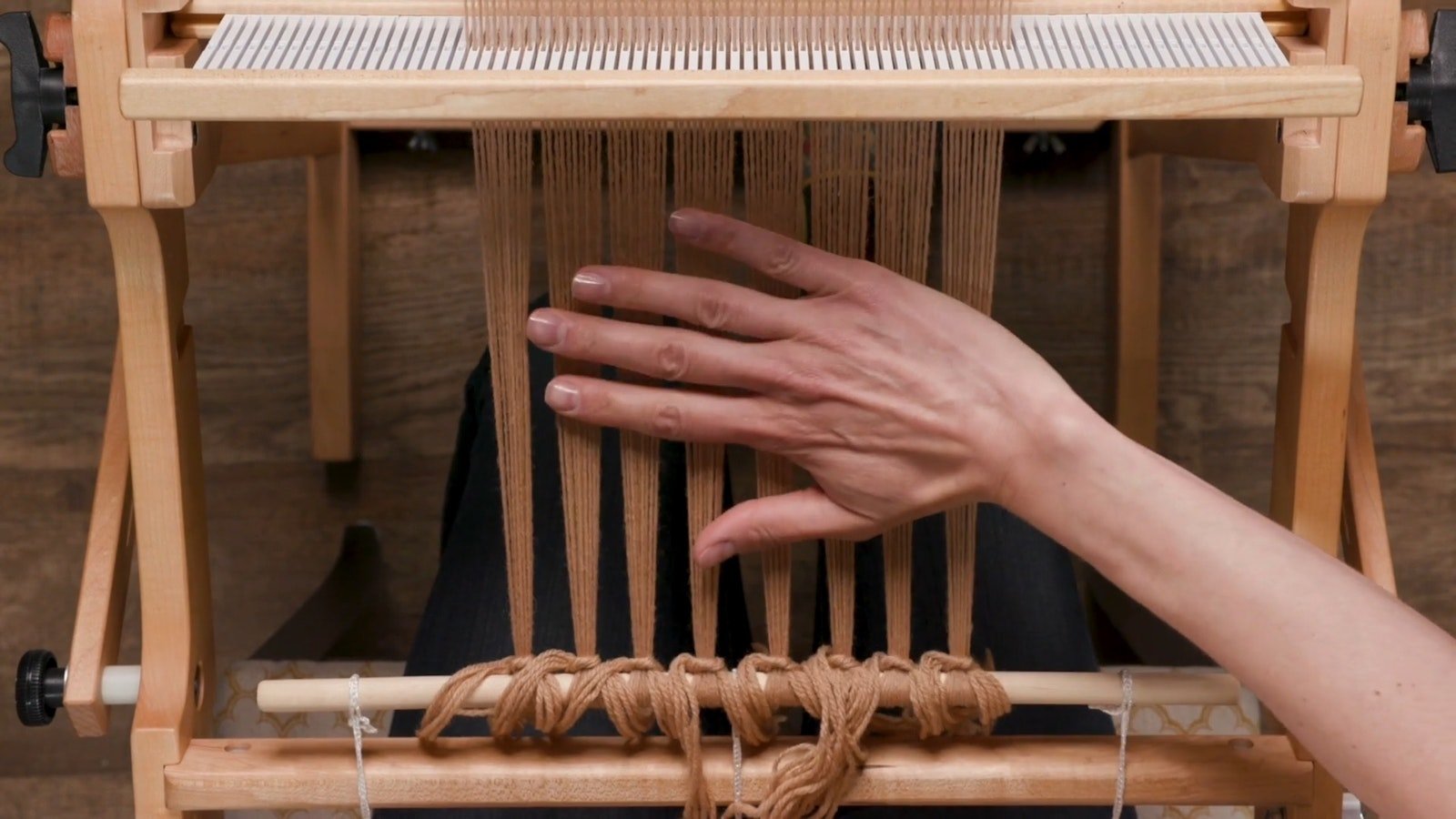If you’re thinking about getting a new rigid-heddle loom and don’t know how to even begin comparing all the loom options available, I’m here to help! Before you purchase a new loom, asking yourself a few questions can help you pick out the right loom for you and the projects you want to weave.
First, a note about how rigid-heddle looms work. All rigid-heddle looms are built on the same basic premise: You have a rigid heddle with slots and holes and by lifting and lowering the heddle, you lift and lower the threads in the holes to create the “over-under” you need to weave. In that respect, the mechanics of all rigid-heddle looms should be the same, so if you’ve been using a friend’s loom and are worried about getting a different version or brand, rest easy in knowing that there shouldn’t be much of a learning curve, if any.
What do you want to weave?
First and foremost, take into consideration the types of projects you want to weave. If you want to weave only scarves, you can probably get away with a fairly narrow loom, but if you want to weave table linens, you’ll want to make sure you get a loom that’s at least 16", although you'll have more project options if your loom is at least 20". You might be tempted to get the widest loom available, but unless you want to weave wide projects regularly, I don’t recommend it. Weaving narrow projects on an extra-wide rigid-heddle loom can be cumbersome and unwieldy. Similarly, consider how long of a warp you can put on the loom. If you want to weave big batches of towels, you’ll want a loom that can handle a longer warp than if you wanted to weave one-off scarves.
A second consideration is the kind of cloth you want to weave. Do you want to stick with plain weave and a pick-up stick or two for extra design work, or do you see yourself wanting to experiment with 2 heddles? Two heddles let you use finer warp threads and weave more complex cloth. If that sounds interesting to you, be aware that not all looms come with a built-in two-heddle setup, and not all looms have the capability to have two-heddle setups added on.
What accessories do you want?
While all you need to start weaving on a rigid-heddle loom is the loom itself, sometimes it’s nice to have some “extras.” Consider whether you want a loom stand, built-in warping board, tabletop holder, warp-length expander, variable-dent heddle, or any other accessories. Each loom company has different available accessories, and sometimes even within a company, accessories might be available for one style of loom but not another.
 Judy Pagel used a variable-dent heddle to weave her Goldmind Scarf from the Summer 2020 issue of Easy Weaving wiht Little Looms. Photo by George Boe
Judy Pagel used a variable-dent heddle to weave her Goldmind Scarf from the Summer 2020 issue of Easy Weaving wiht Little Looms. Photo by George Boe
If you’re interested in getting a loom that has the capability of holding a variable-dent heddle, you need a reed that allows you to change sett within the width of a heddle using removable sections of slots and holes. Some variable-dent heddles come in specific “chunks” of heddle you can place or remove while others let you adjust the sett of every end in the warp.
Can you get a loom locally?
Finally, it can also help to consider how you plan to get your loom and the accessories. Do you want to try to go through a local shop or order everything online? Some yarn stores have affiliations with one or more loom brands, and that can give you the chance to “try before you buy.” If the store has loom accessories in stock, it also can make your life a lot easier to go in and pick up a new heddle on a whim. I realize not everyone is lucky enough to have a loom dealer nearby, but if you are, it really can make your weaving life easier.
Happy Weaving!
Christina
Originally published 12/1/2022; updated 5/21/2025

